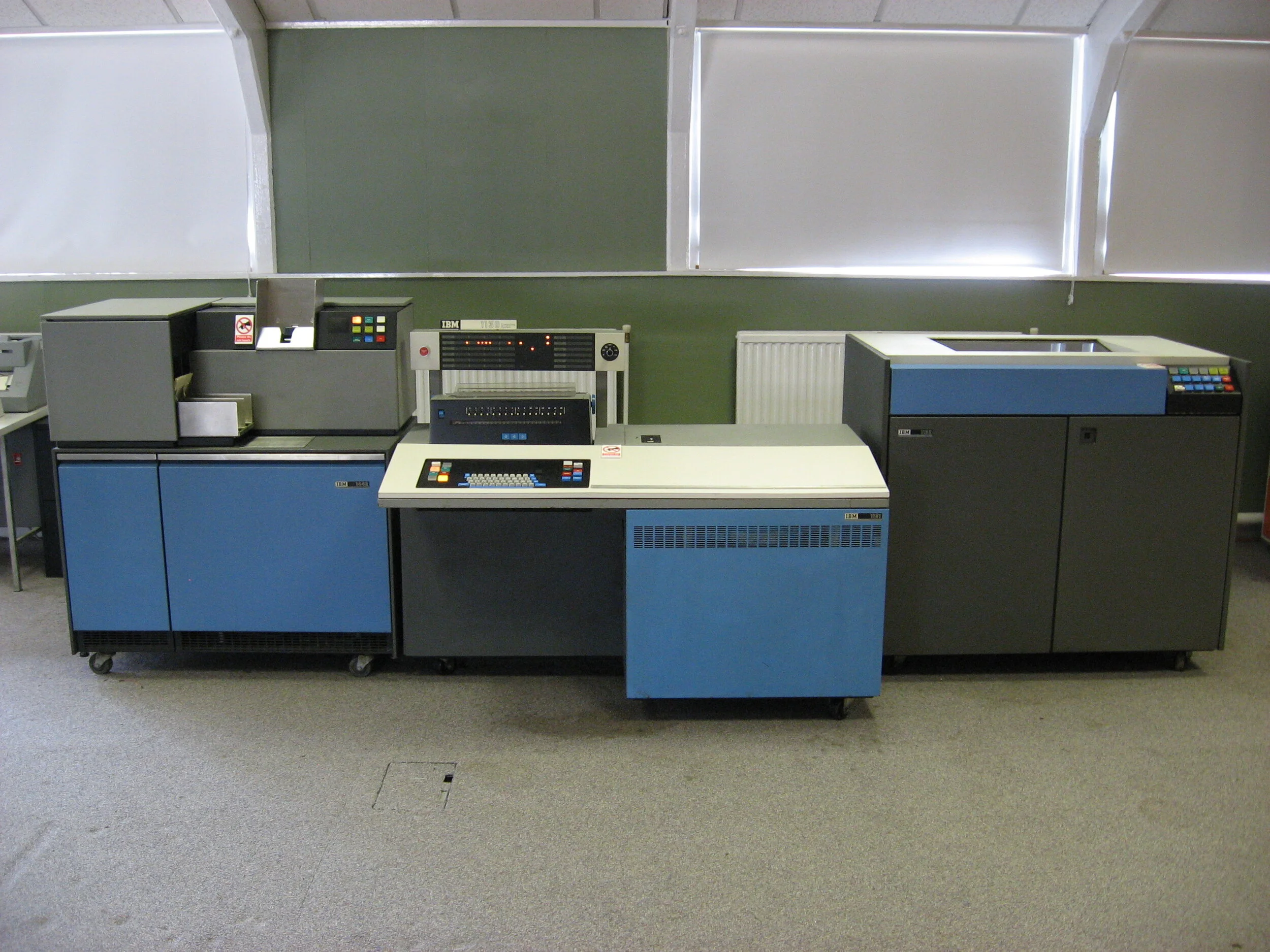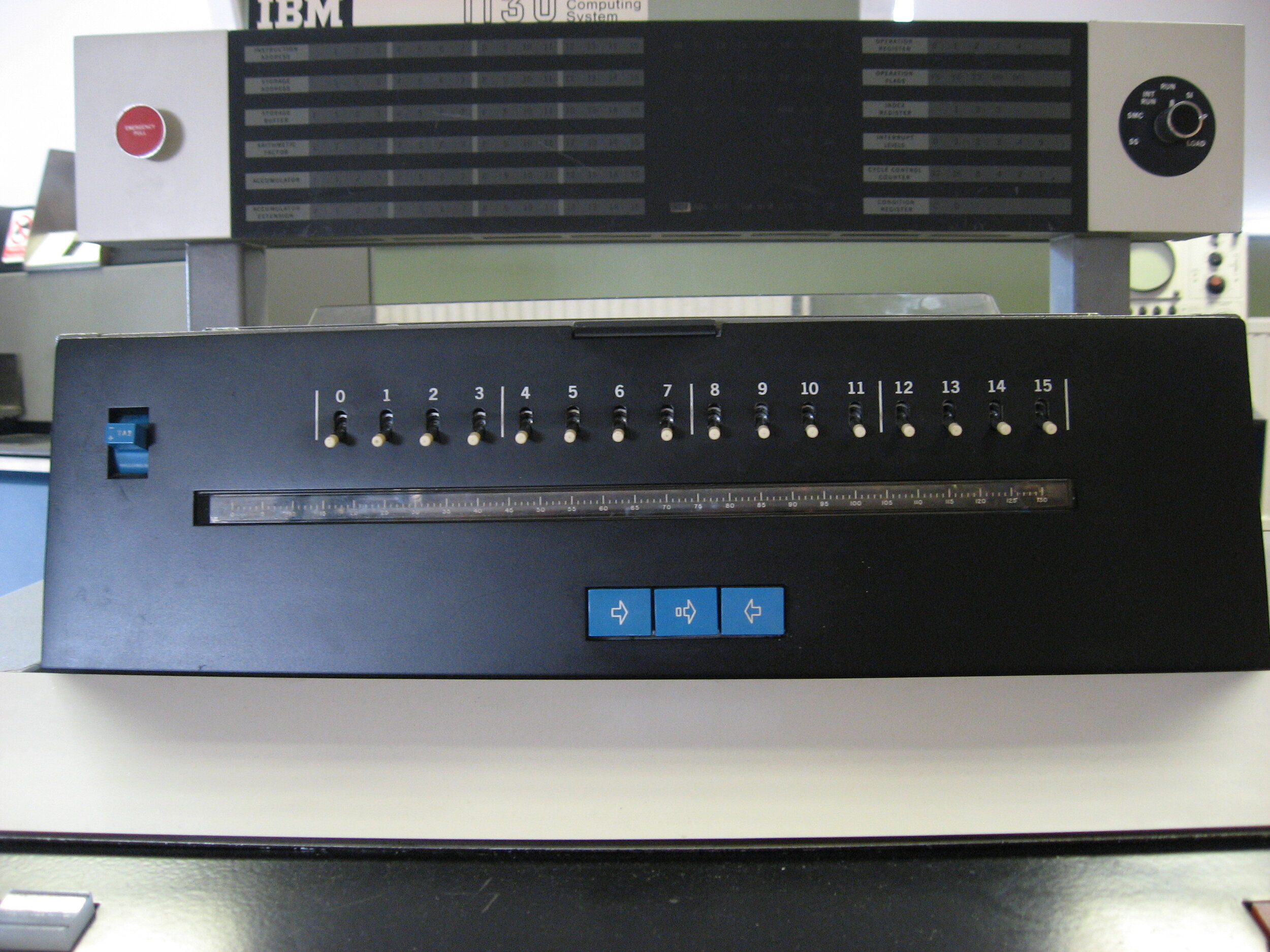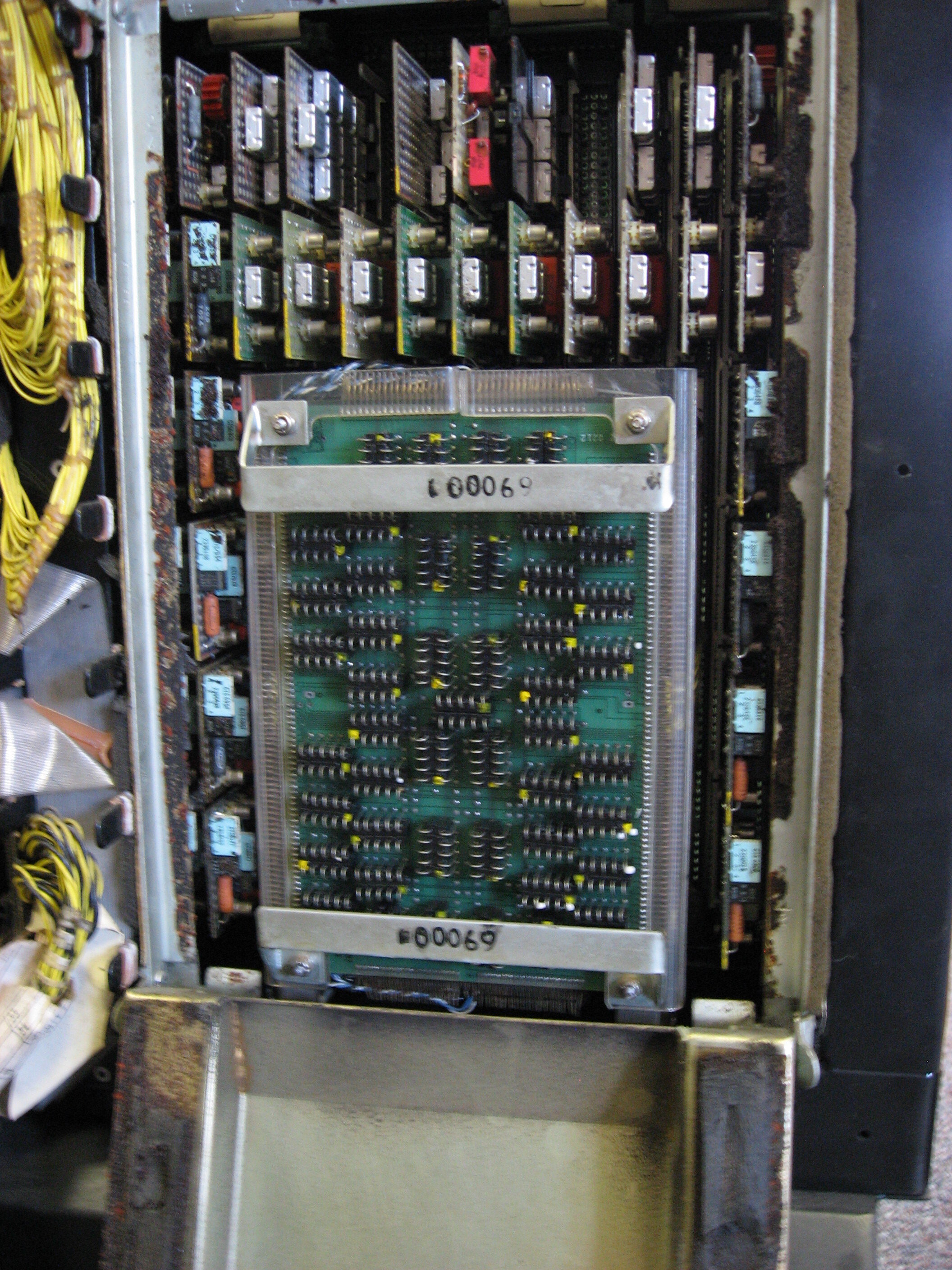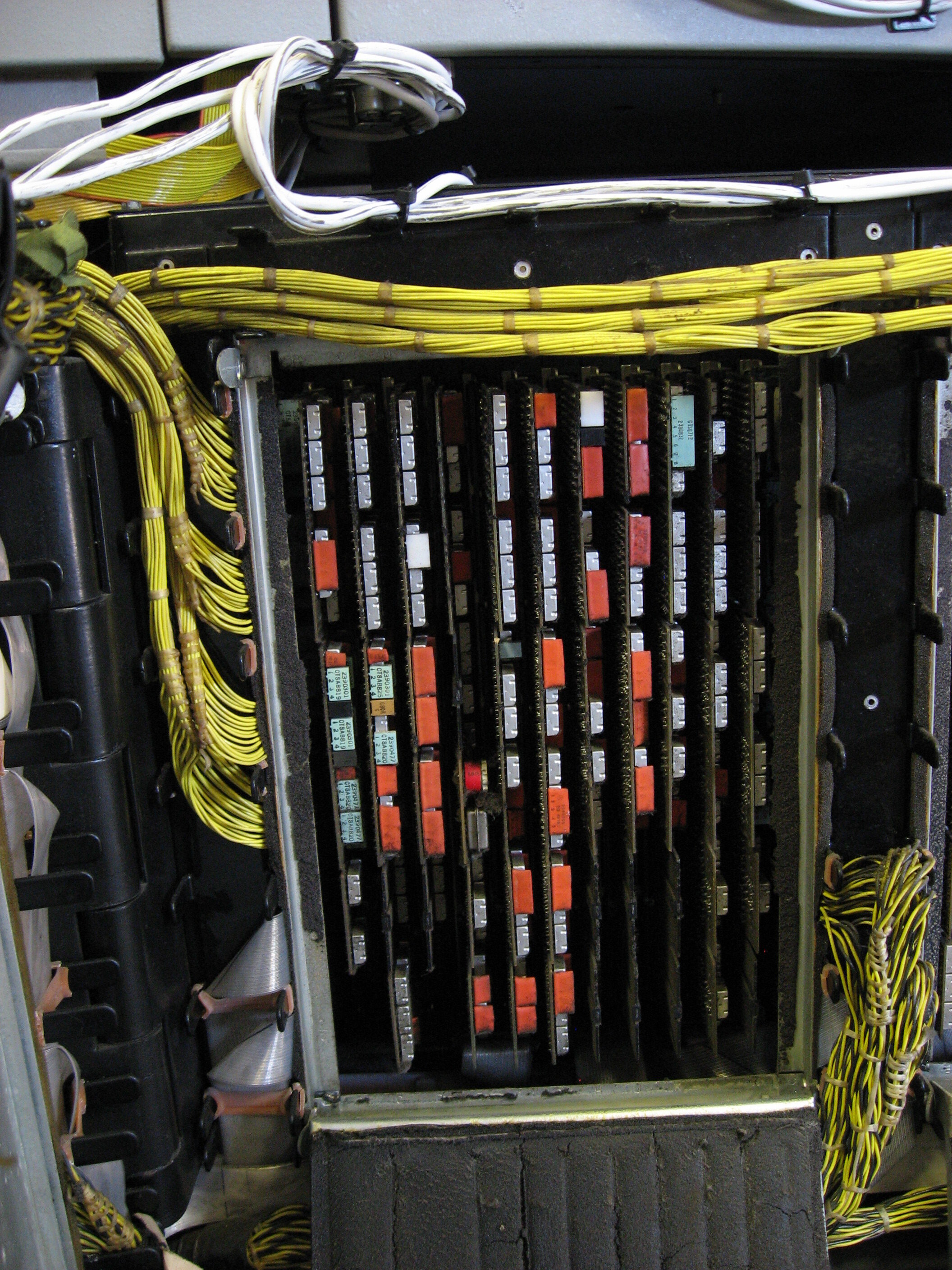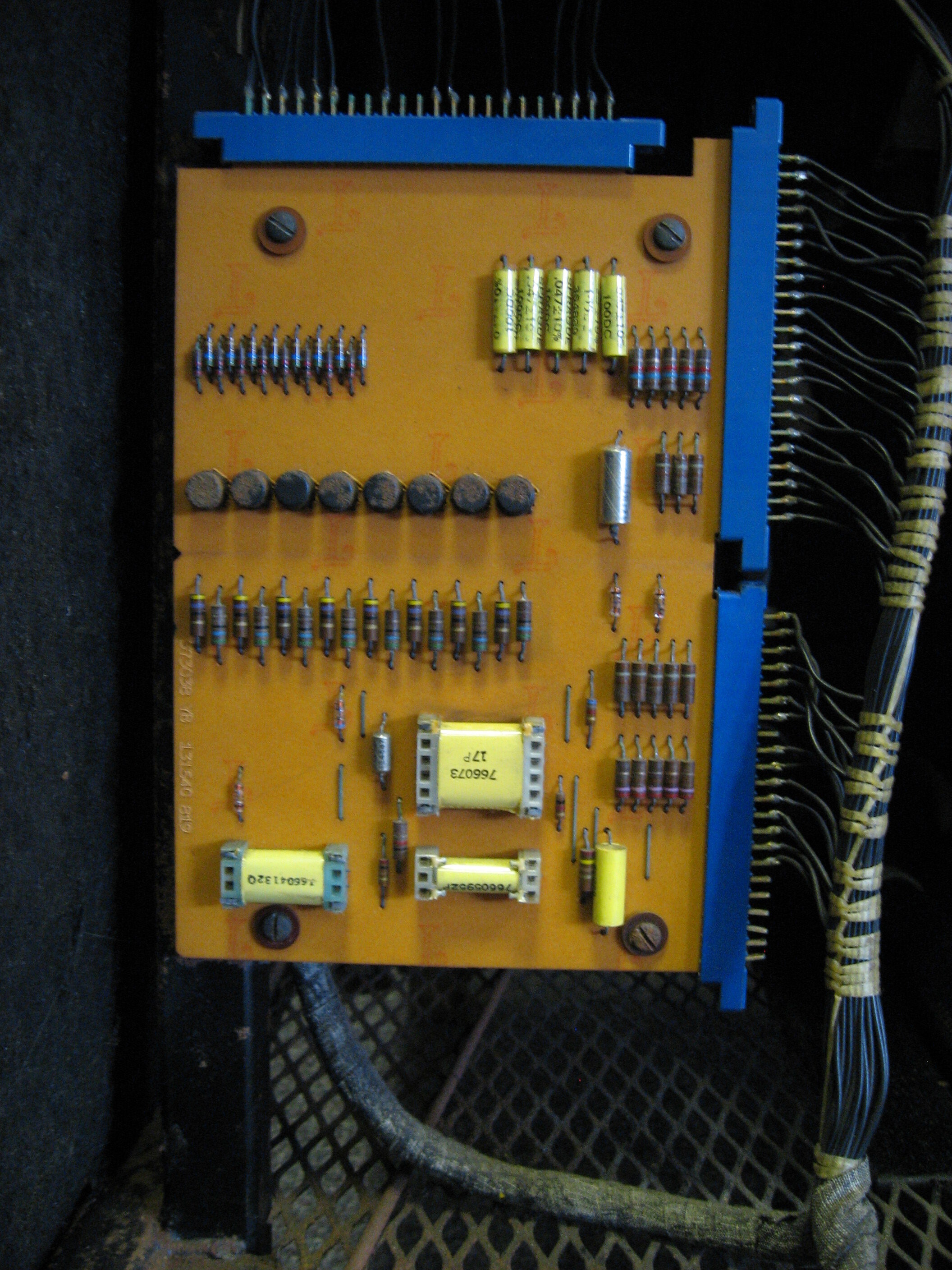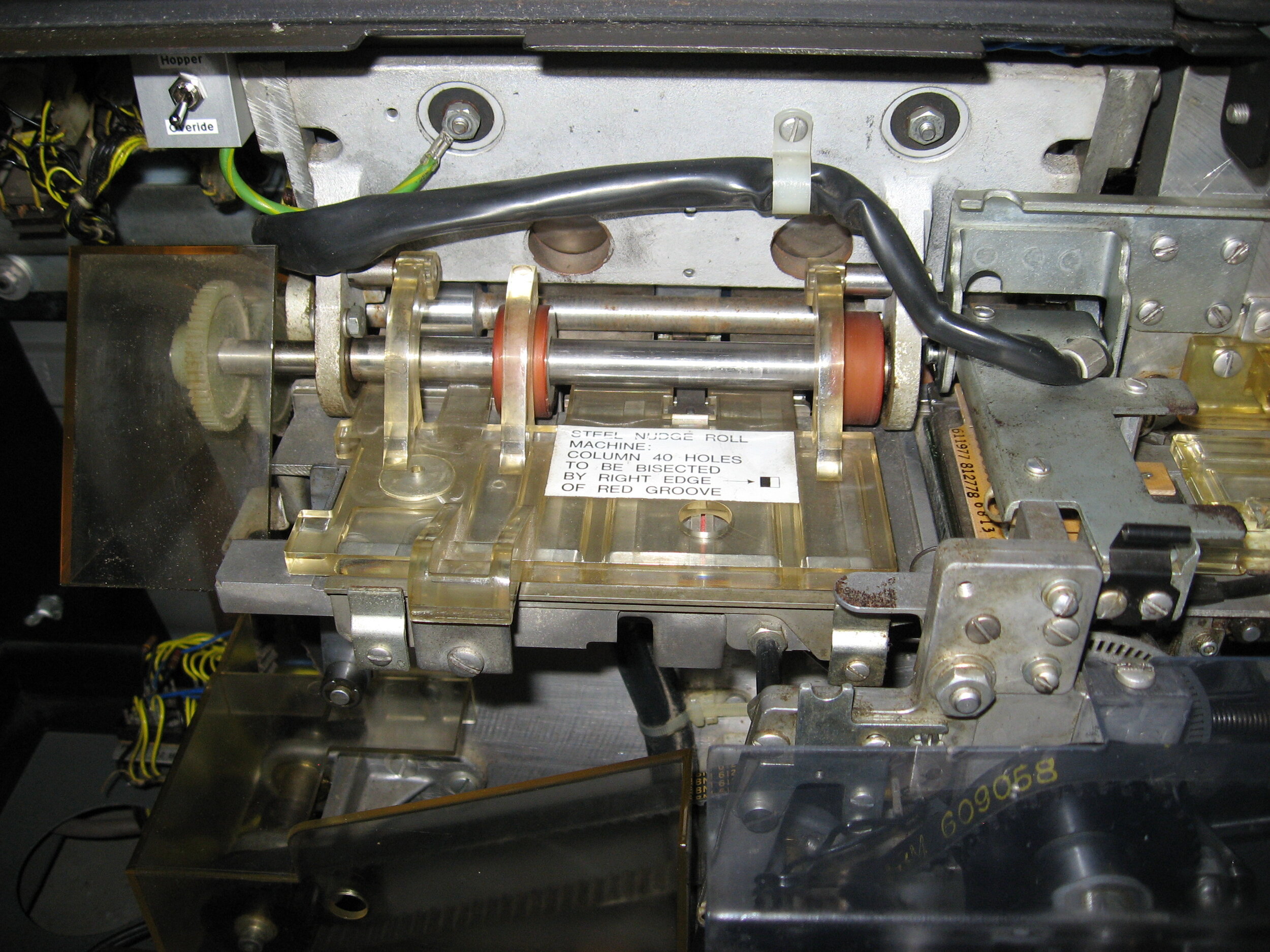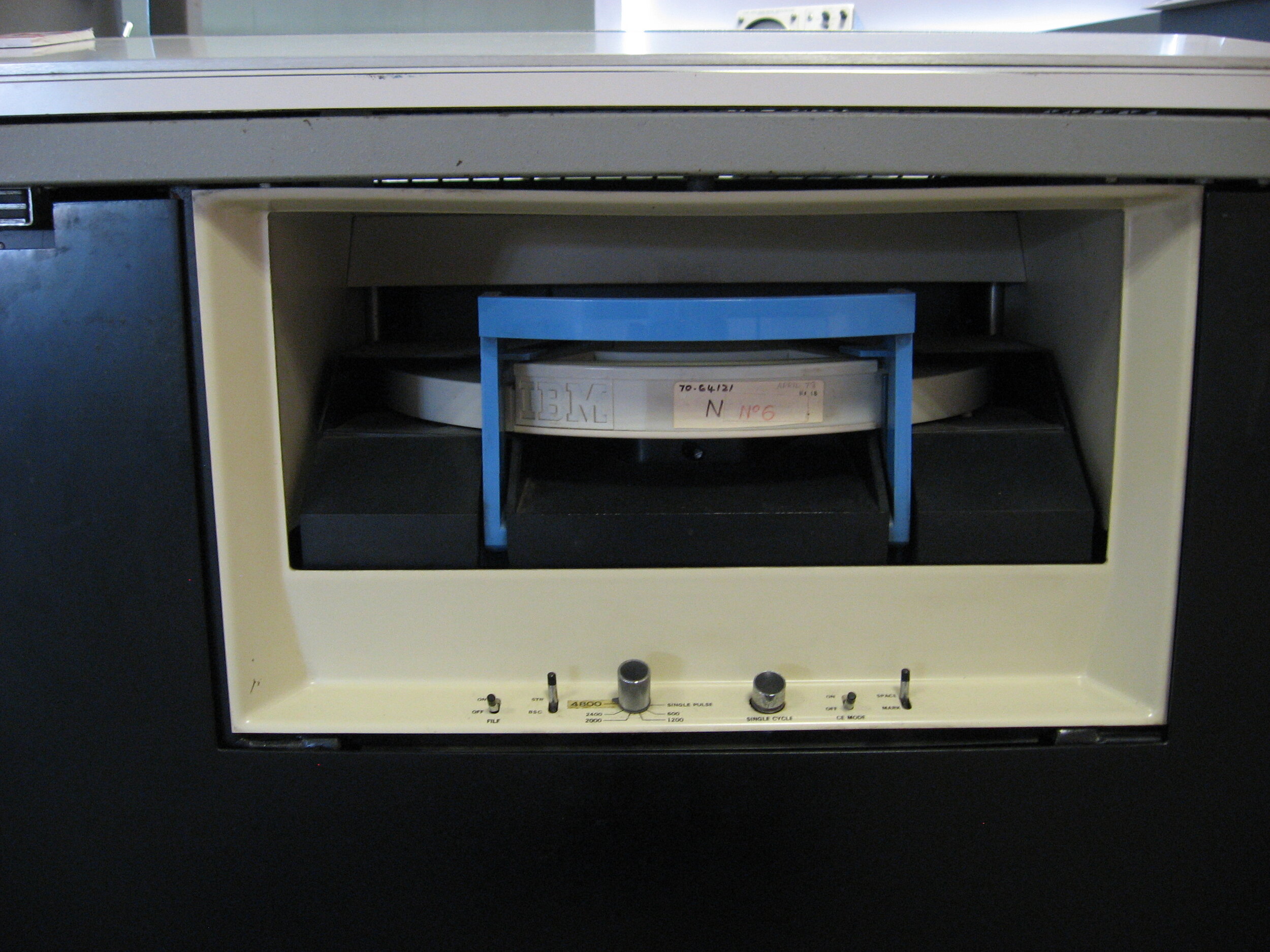Work in progress - Peter
IBM 1130 History
The IBM 1130 computer was introduced on February 11th, 1965 and was IBM’s least expensive system at the time. It was aimed at the price-sensitive technical and scientific computing markets like education and engineering and proved very popular with over 10,000 systems made.
The basic model had 4096 words of core store, no disk drive, 1053 console printer and only a paper tape reader and punch. This rented for $695 per month. The base system could then be expanded to include: an additional 4096 words of core store, low cost IBM 1132 printer (a repurposed IBM printer mechanism from an earlier system), IBM 1442 card reader/punch (another repurposed peripheral from the IBM 1410 range, and used on many IBM systems at the time), IBM 1627 pen plotter, and unique to its time, an IBM 2310 integrated disk drive with 512,000 words of storage.
Later models had a faster core store (2.2us) and with the addition of a blister pack, a small extention to the main unit on the left, an additional 24576 words of core store (taking the maximum to 32768 words of storage).
As the system became more popular additional peripherals we added via an IBM 1133 communications adaptor allowing the much faster IBM 1403 printer and external 2311 multi-platter disk drives amongst other things.
Timeline
Feb 11, 1965
First IBM 1130 models announced: Models A1, A2, B1 and B2
IBM 1132 printer announced, the lowest online computer printer ever announced by IBM at that time
Q4, 1965
First customer shipments begin from the San Jose plant
August 9, 1966
IBM rolls out the 1130 synchronous communications adapter (SCA), which permits the small 1130 system to be connected by regular leased telephone lines to, and function as a communications terminal for, any model of the IBM System/360.
April 17, 1967
A four-way expansion of the 1130 is announced (Models B3, C2, C3, D2 and D3), involving:
Five times the disk storage and four times the magnetic core memory size
An additional processing speed almost 40 percent faster than previously available
More and faster peripheral equipment, including an optical mark reader
An improved commercial programming package.
January 1968
First shipments begin of the 1130 Models B3, C2, C3, D2 and D3.
July 1968
The Boca Raton plant begins shipping the 1130.
July 22, 1971
1130 Models 4A and 4B are introduced at new levels of economy.
September, 1971
First customer shipments begin of the 1130 Model 4.
May 31, 1972
Models 1C, 1D, 5B, 5C and 5D are announced.
Unknown (possibly early 1980s)
1130 model range withdrawn by IBM
The Museum’s IBM 1130
The system we have is currently on long-term loan from Liverpool University. It had been used there since it was built in about 1968 up until about 1982, when it was put in storage. While this was at the university, it was not actually used for educational purposes initially, although it did make it into the nuclear physics department tat the university.
Until recently what it was used for was a mystery… the only clues were a few scraps of paper left in the card cabinet that came with it That indicated it was being used in the Nuclear Physics department at Liverpool university in 1982, but thanks to a visitor that actually used it, some of its quite unusual past is now known.
The specification of the machine is:
IBM 1130 desk
IBM 1131 Processor - Model 2B.
Selectric console printer - Model 1053
IBM 2310 integral disk drive (uses IBM 2315 removable disk packs) with 512,000 words of storage
IBM SCA - Synchronous Communications Adaptor allowing the 1130 to communicate with IBM 360/370 processors via dial-up or permanent leased lines and act as a job entry system to the bigger mainframes.
Power supplies which supply power to 1130 desk, 1131 processor, 1132 printer and 1442 card reader/punch - 240V 50Hz supply
IBM 1132 Line printer - Model 1, 120 columns
IBM 1442 Card Reader/Punch - Model 6, 300 cards/min reading, 80 cards/min punching
Also part of the display but came with our ICL 2966 is:
IBM 29 Card Punch. (Although not from Liverpool, it has been grouped with the IBM 1130 system) - 240V 50Hz supply.
The Machines History
IBM at the time rented the majority of there systems, but this system was actually purchased by Liverpool University. It turns out that they could get government grants for capital purchases but not for rentals, so with a grant agreed, the system was purchased in 1968.
As indicated above, this was used in the nuclear physics department around 1982 according to paper found in the punched card cabinet that came with the system. This cabinet held the diagnostic card decks (which were vital to its restoration success) and some spares along with a few pieces of paper and some hand written notes.
So for many years that is as much information as we could find, but thanks to a visitor who actually used the system, its past is far more unusual than we could have imagined.
It was in fact used to digitise bubble chamber trace photos produced at CERN in Switzerland of atomic reactions.
The description that follows details the work our 1130 did for CERN at Liverpool University Physics Department:
“Bubble chamber photographs of atomic reactions on reels of wide format film were shipped in from CERN, the joint European particle accelerator at Geneva. A bubble chamber is a large cylinder filled with liquid hydrogen at just below its boiling point. The cylinder has a piston which causes the hydrogen to partly vaporise when it is suddenly expanded. Charged atomic particles leave tell-tale tracks of tiny bubbles when they plough into the hydrogen mist. Each bubble chamber image was simultaneously taken by three cameras at different angles.
In Liverpool each three large reels of film which contained 100s of images corresponding the an experimental run at CERN were loaded onto projectors on a digitising table. This was a very heavy and very stable 3 metre high steel construction with a huge mirror mounted above. There were 8 of these tables in a large darkened room.
Particle tracks from each event of interest were catalogued by the physicists who ran the experiment. They were digitised by a team who sat in the dark all day at the tables and who were known as the "measuring ladies". Each image was projected up to the huge mirror then down onto the table top where they clicked along particle tracks entering measurement points. Each particle track was curved to different degrees by the magnetic field that was a applied to the chamber, enabling it to be identified.
This IBM 1130 minicomputer was interfaced to all of the tables. A press of the button on the measurement clicker raised an interrupt on that table’s interface channel and the coordinates were read off and buffered. When the end of track button was pressed the accumulated coordinates were validated by a circle fit routine. In reality a particle track is a 3 dimensional spiral but a circle was close enough for the 2D single camera image. A track that failed for any reason simply had to have all its points re-measured. There was no track “editing”. Completed tracks were temporarily stored to disk to a data file which grew larger as the day went on.
The data collection program was written in assembly language. The least squares circle fit was written in Fortran. The software had a capacity for up to 12 tables but as far as I remember only 8 or so were built.
At the end of the afternoon the day’s data was transmitted by 1200 baud modem over a dedicated coax cable to the Physics Department’s IBM 360/50. This took over an hour and frequently broke down. I spent many an hour deleting out records that were causing the failure to prevent a whole day’s work from being lost. The file at the ibm1130 end was not cleared until it was certain the data was safely on the 360.
From there the event data was reconstructed and analysed in three dimensions by a suite of Fortran programs. For some reason these had been given agricultural names, “Plant”, “Thresh” and “Grind”. I took over the maintenance of “Plant”. This was just a data transformation and reformatting program which correlated the raw track data into atomic events. All the heavy physics took place in the following two programs.”
We are grateful to Roy White for telling us the story of our IBM 1130.
Current Status of machine
After a 5 year restoration project, and continued maintenance, all parts of the system; CPU, console, printer, card reader and disk drive are working, but there are a few issues still to resolve like not printing the correct characters in the last 10 columns of the printer and the card punch not always working, but apart from that, it has been running most weekends.
While it came with a full set of diagnostic cards, all of which pass when run, the system did not come with a DMS disk pack or the punched cards needed to create one. This is the Disk Management System containing assemblers, compilers and libraries for writing and running software. So as far as demonstrating the system, we are limited to running CPU, line printer or card reader tests.
The other major hurdle to get over is getting real programs written and loaded. The only way to load programs are from punch card, but the museum does not have a means for punching cards. While there are 1130 emulators around where simple demo programs could be written, we do not have the means to produce them on punch card or load them in other ways. But this will be something we will overcome in time.
For now, this is only one of 5 known, working 1130s in the world. Even though there were over 10,000 systems built, it is still a very rare system.
IBM 1131 processor - Model 2B
The specification of the machine is:
16 bit machine
Model 2B
8 KiloWord 3.6us core store; 16 bit word with dual parity bits
Single, integrated 512 MegaWord 2314 disk drive
Uses IBMs SLT (Solid Logic Technology) plug-in cards into a wire-wrapped backplane split into 6 sections.
Console consists of a modified Selectric 1 mechanism with 16 toggle switches. These are used for setting options for programs running and for diagnostic purposes (setting addresses, entering data / instructions into memory).
The system runs of a single 13A plug and supplies mains and other voltages to the printer are card reader.
IBM 1132 line printer - Model 1
This is the main line printer for the machine and was an optional extra. The print mechanism was originally in an IBM 407 system and was re-purposed as a low-cost printer for the 1130.
The Model 1, which we have, was later replaced with a model 2. This was functionally identical but had a better ribbon feed mechanism that plagued the earlier model.
Unlike many line printers this only has 120 columns with each column having a print wheel with 48 characters (it printed upper case only).
This was a very dumb printer… It had to interrupt the 1131 CPU each time it needed to print a specific character which meant the CPU could not do very much else when printing.
A later option of an IBM 1403 printer allowed the 1131 CPU to send the ine of text to be printed using a single interrupt, leaving the printer itself to control the printing.
IBM 1442 card reader / punch - Model 6
This card reader / punch was used on a number of IBM computer systems. It was originally part of the IBM 14XX range but became an option on IBM 360 / 370, IBM 1800, IBM 1620 and the IBM 1130.
The 1130 needed a card reader to boot as it could not boot from the disk pack (and some models did not have one anyway). It used what is know as a fast start card, which could be loaded using a program load button on the 1131 which had a small program and configuration settings to select the book disk and load a boot loaded from it. Systems without a disk pack would load programs from punched card or paper tape which required a small loader program to be read first which then read the rest of the paper tape or cards.
There were 7 models in the range, with the later models reading and punching faster. The Model 5 did not have a puch mechanism fitted so was a cheaper option instead of the IBM 2501.
This is a model 6 and can read 80 column punch cards at 300 cards per minute and punch at 80 cards per minute. The design of the punch mechanism after the reader allowed cards to be read and then punched before ending up in the output bin.
The 1130 could also use another popular card reader, the IBM 2501, which could read cards much faster at 600 to 1000 cards per minute and for some configurations both a 2501 and 1442 were fitted.
Integrated disk drive - IBM 2314
The IBM 1130 was the first system from IBM to use removable disk packs, the IBM 2315. It was this mechanism and disk pack design that was taken up by DEC and other computer manufacturers at the time to use in their systems.
The 2315 pack was hard-sectored allowing 4 sectors per tack and 200 tracks per surface giving a combined total of 512 kilo words of storage (1 Megabyte). It also had 3 spare tracks per surface and if a bad sector was detected, the whole track would be mapped out to one of the spares.
The head mechanism used a rachet design and the drives had a very distinctive sound when the heads were moved.
IBM 29 card punch
The IBM 29 card punch was used to punch 80 column punch cards. It was primarily used as a data preparation machine. Punched cards were the primary data entry method so they had to be created somehow, and the IBM 29 was used for this purpose.
So many punch cards were needed that often large rooms were filled with this machine and Women spent all day punching out data to be used for future processing by the likes of the IBM 1130.
They were also used to create source code program decks which were punched out and then read into systems such as the 1130 and the results of assembling and compiling the source code produced.

